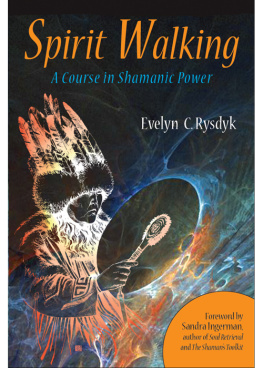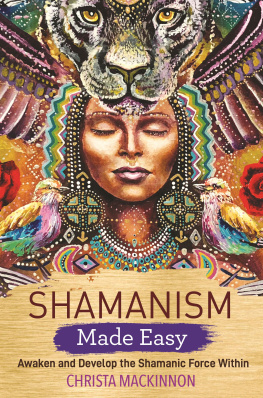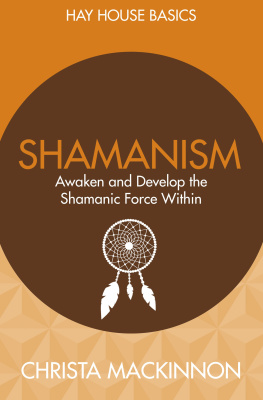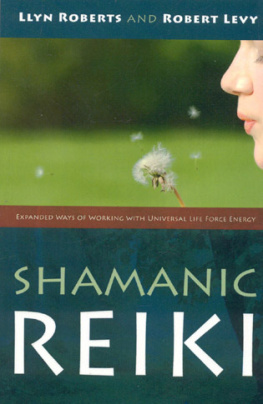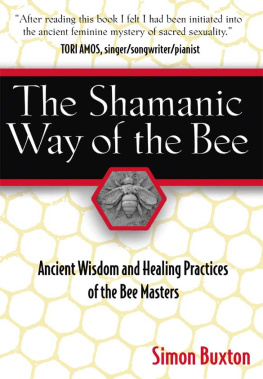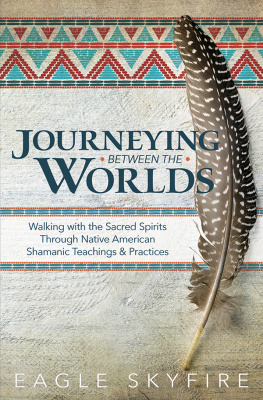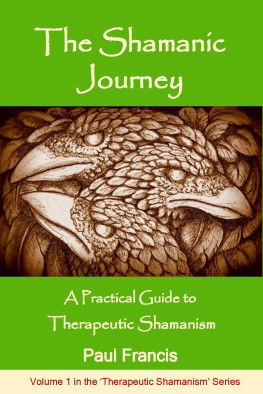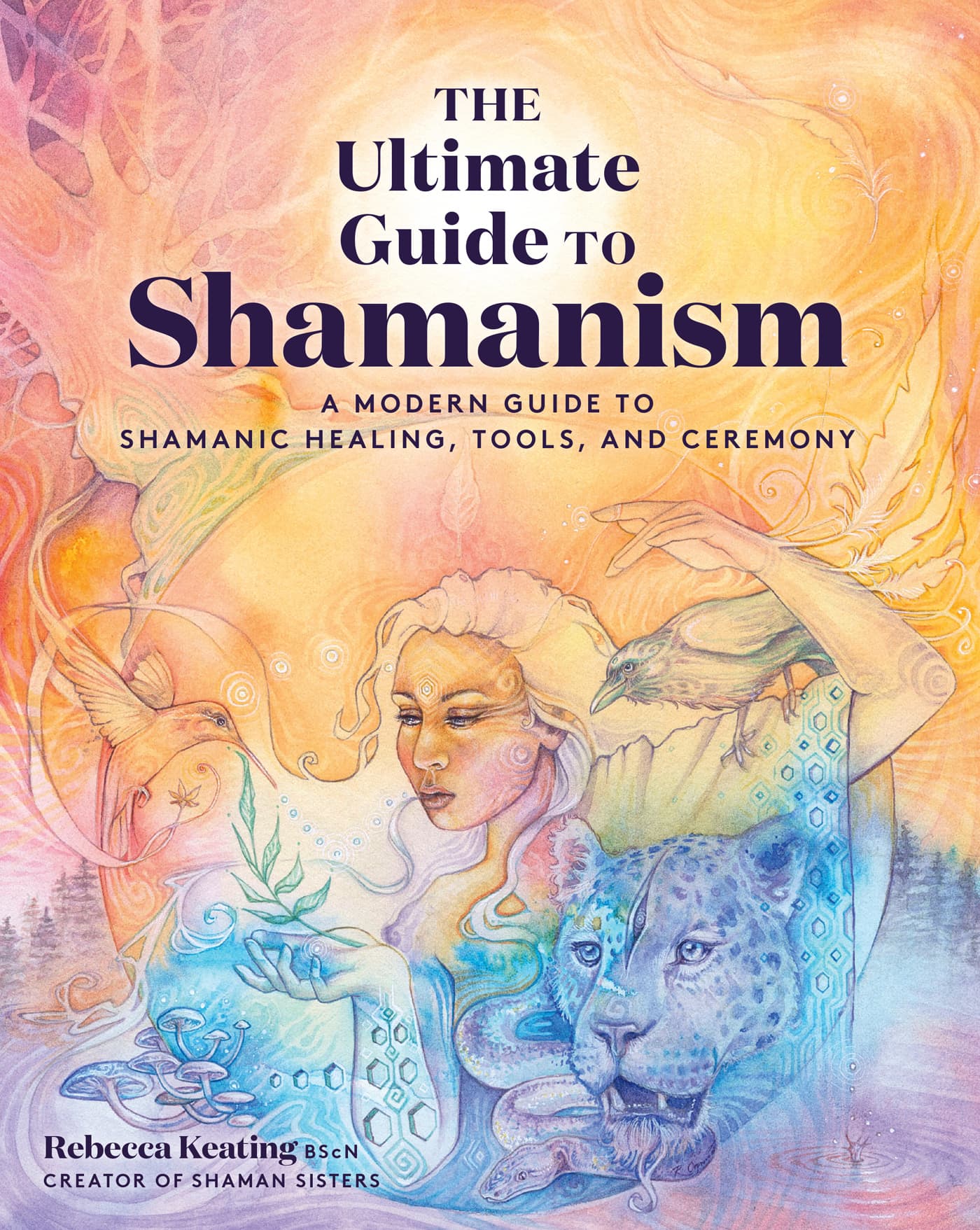Contents
Page List
Guide
Cover
The Ultimate Guide to Shamanism
A MODERN GUIDE TO SHAMANIC HEALING, TOOLS, AND CEREMONY
Rebecca Keating BScN
CREATOR OF SHAMAN SISTERS
Contents
Authors Note
When you engage in shamanism, you are aligning with the most potent, ancient, and eternal forces of the cosmos. You begin to connect to your true essence and the unseen world around you. You will experience initiations on your journey, as you peel back the layers and step into your gifts, Higher Self, and fullest expression. Although this is a beginners book on shamanism, these practices are powerfully transformative and should be practiced with sincere intention.
I considered why I was writing this book many times. As a white identifying woman in this life, I have lived many lifetimes in various roles: I have incarnated in many ethnicities and have been a healer, medicine woman, and shaman in many lives. I used shamanic practices to heal and transcend the timelines of abuse and separation. Through my journey of shamanism, I discovered one of my deepest wounds is fear of connection, and through healing I accessed one of my greatest gifts of uniting community. I know that my healing is your healing and your healing is mine.
The global pandemic and protests over racism and indigenous rights have brought so much to the surface. As I wrote this book, I recognized this was all coming up for humanity to acknowledge, honor, heal, and move forward in right relationship. I realized that part of my purpose in writing was to help bring healing. When we shift ourselves, we shift the world: I believe this wisdom is for everyone and is owned by no one. My prayer is to bring healing and reconciliation to our indigenous family in this lifetime and across all lifetimes. For we are all connected, we are all one, we are all a global community, and we are meant to be united.
In this book I offer you a variety of practices in hopes that you find what best suits you and works for you. When it feels good, it comes from the heart. My prayer is for you to access the wisdom of your soul.
Blessings, Reverence & Love AHO Rebecca Moonlight Owl
Part I
HISTORY AND PRINCIPLES OF SHAMANISM
01
Origins and History
Since the dawn of time, the call of the unseen universal spirit has taken hold in our hearts. Shamanism is deeply rooted in the unseen, navigating through both natural and supernatural forces in our planet and the cosmos. It is based on the knowledge that you are part of something bigger than just your five mere sensesthat you are constantly engaging with the universal field of energy that you can access and tap into for information, guidance, healing, and personal power.
Connecting with the invisible world is part of all cultures, ethnicities, and languages. And shamanism has shifted and changed over the millennia to serve the needs of the community. Considered one of the oldest healing modalities on Earth, it seeks to connect us to the very source of our creation. The role of a shaman can include being a mystic, healer, doctor, priest/priestess, psychotherapist, counselor, storyteller, and keeper of ancient wisdom. It is an integral piece of the fabric of humanity, stretching across continentsand it is still relevant to our society to this day.
The History of Shamanism
Shamanism is an ancient tradition that spans civilizations, continents, and countries. This practice can be traced as far back as humankind itself. Shamanism has existed for as long as we have existed. Shamanism started among hunter-gatherer societies during the Paleolithic era. There is evidence of early humans creating drawings in caves or using remains of animal bones for rituals. The ancients believed that all animate and inanimate objects were alive, with their own individual spirit and consciousness. These core ideas continued to endure, even while humankind evolved to more agricultural- and farm-based communities.
Historically, the term shaman originated from the herding Tungus-speaking tribe in North Asia. It was used to describe the traditional healers, medicine women, and medicine men of Siberia and Mongolia. It is sourced from the word aman and the verb a, which means to know. This can be translated as the one who knows.
Over the course of history, shamans were women and men of various ages, as young as preadolescent and onward. The shamans within the tribe were highly respected and were called upon to provide guidance and healing for individuals and for the community.
From a more Western anthropological perspective, shamanism has expanded to include the ritual use of certain practices within a ceremony. These ceremonies provide a formalized, respectful setting in which to honor and communicate with helping spirits and ancestors. Many of these rituals and practices share common traits among various indigenous tribes across the world.
Shamanic practices can be found in a vast range of geographical regions, including Central America, Central Asia, Mesoamerica, Subarctic North America, Europe, Siberia, Japan, Korea, China, Nepal, Bhutan, Egypt, Tibet, and Indonesia. Shamanism also exists in certain indigenous cultures of Australia and Africa.
Each culture created its own unique system, based upon their understanding of the natural world around them and how their ancestors kept and preserved ancient knowledge. Many of these traditions had no written record and were mainly passed on orally from one generation to another. Many indigenous healers do not call themselves shamans. Rather they have terms unique to their own culture, such as curandero (Central and South America), paqo (Peru), naguals (Mexico), kahuna (Hawaii), angakok (Inuit), or manang (Borneo).
Over the centuries, many governments and organized religions have attempted to eliminate, suppress, or vilify the use of shamanismbut it has endured. This may be because at its core, shamanism is deeply grounded in the world and within us.
What Is Shamanism?
Shamanism holds that everything in the universe is interconnected, like a web or fine tapestry. Any feeling of separation is merely an illusion. This allows you to live with an open heart and to know you are connected to everything that is sacred.


